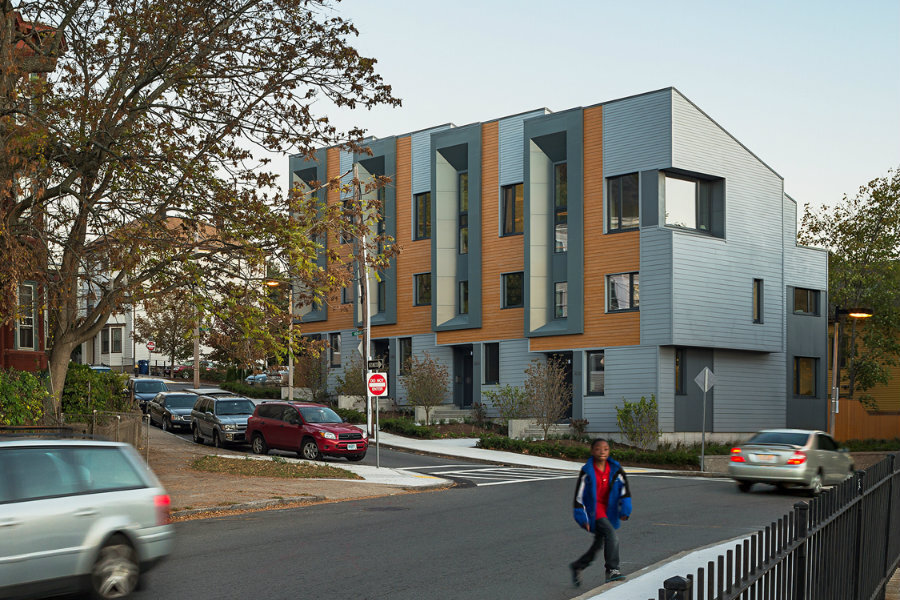The home that pays its own utility bill (and then some)
Loading...
Imagine opening your monthly utility statement to find a check instead of a bill.
That dream may become a reality as more architects design buildings that generate more energy than they use. In Britain, the first low-cost version of just such a home is opening Thursday, marking the country’s initial forays into an emerging global market for so-called energy-positive or net-positive housing – solar-powered homes so efficient, they can generate more power than they consume. It’s the gold standard for green homes, and a concept that has begun to take off around the world.
“As more buildings incorporate energy efficiency and renewables to generate as much energy as they consume over the course of a year, net zero is becoming sort of passé,” energy reporter Molly Miller wrote in 2014 for technology and sustainability news site GreenBiz. “Now it’s time for a newer, sexier, more optimistic buzz phrase in sustainable design. Get ready for ‘net positive.’”
Like net-zero homes – buildings that produce about as much energy from renewable sources as they consume – net-positive housing involves the use of sustainable materials, photovoltaic (PV) solar panels, and energy management systems in the design and construction of a home. The idea is to insulate the building to help reduce energy use and waste, to design its layout to maximize natural energy flows, and to generate power locally using the solar panels.
The idea isn’t new, but it has seen more attention in the last few years, says Stacey Hobart, communications director of Seattle’s New Buildings Institute, a nonprofit that seeks to improve the energy performance of commercial buildings.
“About five years ago, there was an epiphany,” she says in a phone interview. “Not for all buildings, not for all climate zones – but energy-positive became technically feasible.”
In 2013, Boston-based design firm Urbanica, Inc. unveiled the first energy-positive housing development in the city, featuring three-story, three-bedroom townhouses equipped with 37 photovoltaic solar panels, triple-glazed windows, rainwater harvesting equipment, and airtight walls, Boston.com reported.
According to data provided by Urbanica, each unit uses about 8,000 kilowatt-hours (kWh) of energy a year while producing about 10,500 kWh – a significant drop from the average yearly electricity consumption for a US residential utility customer, which in 2013 was just under 11,000 kWh (worth roughly $1,200), according to the US Energy Information Administration.
The houses cost 20 to 30 percent more than an average home to build, says Urbanica president Kamran Zahedi, but financial support from the Boston government and local energy providers helped make the project feasible.
He adds, “The feedback has been very positive. The owners are basically very happy with the air quality of the houses, the solar panels, all of it.”
Still, most energy-efficient homes and buildings today are custom built, which makes access an issue.
“Net-zero energy is an ambitious goal for any building – one that can’t be achieved without scrupulous attention to every aspect of a building’s design, construction, and operation,” according to Nadav Malin, president of industry news site BuildingGreen. “There are a handful of projects out there proving that it is possible – for the right building in the right setting with the right team.”
Political will is also vital to getting energy-positive projects off the ground, Ms. Hobart says, and the reliance on government funding and industry cooperation is, in many cases, a big stumbling block.
“Not all governments are open to the idea,” she says. “But those who have made energy efficiency a part of their policy plank are seeing results.”
Projects like the ones in the UK may be a step in the right direction. Like the Urbanica and other energy-positive housing developments, the UK houses have solar panels that function as a roof, batteries that store the electricity the panels generate, and large amounts of insulation to reduce energy use during the winter, The Guardian reported.
Yet the whole thing reportedly cost £125,000 (just under $200,000) and took 16 weeks to build. The houses are also expected to generate about £175 ($273) in electricity exports for every £100 ($156) spent on power, Professor Phil Jones, whose team at Cardiff University’s Welsh School of Architecture designed the house, told the paper.
“The building demonstrates our leading edge low carbon supply, storage and demand technologies at a domestic scale which we hope will be replicated in other areas of Wales and the UK,” Prof. Jones said.
The benefits go beyond the obvious environmental ones. Because of the necessarily intricate relationship between design and function involved in building them, net-zero and net-positive homes tend to be better-made and more comfortable, Hobart says. Lower energy costs also add up over the long term, she notes – and while the industry is not quite there yet, there may come a time when energy-positive houses can help their owners actually make money.
“The future could look very different than it looks today,” Hobart says. “It’s possible that residents could get paid for the power they produce.”








